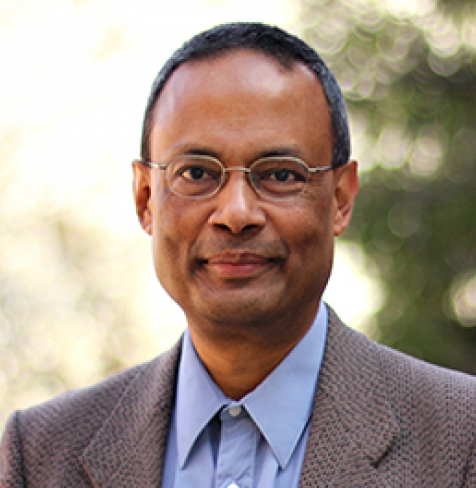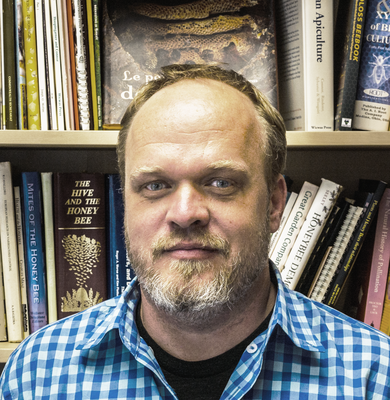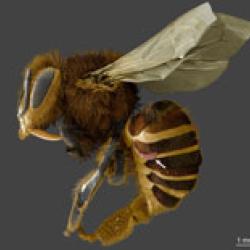Two from College Named 2016 Highly Cited Researchers
Two researchers from the University of Maryland's College of Computer, Mathematical, and Natural Sciences are included on Clarivate Analytics’ 2016 list of Highly Cited Researchers, a compilation of influential names in science. The Intellectual Property and Science division of Thomson Reuters compiled previous versions of this list.
- Sankar Das Sarma, Richard E. Prange Chair in Physics, Distinguished University Professor, Fellow of the Joint Quantum Institute and Director of the Condensed Matter Theory Center. Das Sarma was also included in three previous compilations: 2015, 2014 and 2001.
- Dennis vanEngelsdorp, Assistant Professor of Entomology and Project Director for the Bee Informed Partnership
Sankar Das Sarma
 Das Sarma’s research interests include condensed matter physics, statistical mechanics and quantum information. A theoretical condensed matter physicist, Das Sarma has worked in the areas of strongly correlated materials, graphene, semiconductor physics, low-dimensional systems, topological matter, quantum Hall effect, nanoscience, spintronics, collective properties of ultra-cold atomic and molecular systems, optical lattice, many-body theory, Majorana fermion, and quantum computation. In 2005, Das Sarma, with colleagues Chetan Nayak and Michael Freedman of Microsoft Research, introduced the nu=5/2 topological qubit that led to experiments in building a fault-tolerant quantum computer based on two-dimensional semiconductor structures.
Das Sarma’s research interests include condensed matter physics, statistical mechanics and quantum information. A theoretical condensed matter physicist, Das Sarma has worked in the areas of strongly correlated materials, graphene, semiconductor physics, low-dimensional systems, topological matter, quantum Hall effect, nanoscience, spintronics, collective properties of ultra-cold atomic and molecular systems, optical lattice, many-body theory, Majorana fermion, and quantum computation. In 2005, Das Sarma, with colleagues Chetan Nayak and Michael Freedman of Microsoft Research, introduced the nu=5/2 topological qubit that led to experiments in building a fault-tolerant quantum computer based on two-dimensional semiconductor structures.
Das Sarma, a physics faculty member at UMD since 1980, earned his undergraduate degree in physics in 1973 from Presidency College in Kolkata, India, and his Ph.D. in theoretical condensed physics in 1979 from Brown University.
Dennis vanEngelsdorp
 VanEngelsdorp’s research focuses on using an epidemiological approach to assess honey bee health. His research group is a world leader in the study of major mechanisms responsible for the decline in honey bee health, including an increase in pests and pathogens, poor nutrition due to the loss of natural forage, and pesticides applied by both beekeepers and farmers. VanEngelsdorp’s approach is multifaceted, addressing both the etiology of individual bee diseases and the large-scale monitoring of colony health. He is also project director for the Bee Informed Partnership, a coalition of researchers, advisors and stakeholders from various industries that rely on honey bees for pollination. In combination with annual nationwide surveys, the Bee Informed Partnership also works directly with beekeepers to help gather pest and disease data and validate trends in management practices.
VanEngelsdorp’s research focuses on using an epidemiological approach to assess honey bee health. His research group is a world leader in the study of major mechanisms responsible for the decline in honey bee health, including an increase in pests and pathogens, poor nutrition due to the loss of natural forage, and pesticides applied by both beekeepers and farmers. VanEngelsdorp’s approach is multifaceted, addressing both the etiology of individual bee diseases and the large-scale monitoring of colony health. He is also project director for the Bee Informed Partnership, a coalition of researchers, advisors and stakeholders from various industries that rely on honey bees for pollination. In combination with annual nationwide surveys, the Bee Informed Partnership also works directly with beekeepers to help gather pest and disease data and validate trends in management practices.
VanEngelsdorp earned his undergraduate degree in agriculture in 1992 and his master’s degree in environmental biology in 1995 from the University of Guelph in Ontario, Canada, and his Ph.D. from the Pennsylvania State University in 2011.
The Highly Cited Researchers list features more than 3,000 authors from 21 science disciplines whose published work in their specialty areas has consistently been judged by their peers to be of particular use and significance. These researchers earned the distinction by writing the greatest numbers of reports officially designated by Essential Science Indicators (ESI) as Highly Cited Papers—ranking among the top 1 percent most cited for their subject field and year of publication. The 2016 Highly Cited Researchers list is drawn from data contained in the ESI spanning 2004-2014, which included 128,887 Highly Cited Papers.
The Highly Cited Researchers list is one of several criteria used by the Center for World-Class Universities at Shanghai Jiao Tong University to determine the Academic Ranking of World Universities.
###
Media Relations Contact: Abby Robinson, 301-405-5845, abbyr@umd.edu
Writer: Matthew Wright
University of Maryland
College of Computer, Mathematical, and Natural Sciences
2300 Symons Hall
College Park, MD 20742
www.cmns.umd.edu
@UMDscience
About the College of Computer, Mathematical, and Natural Sciences
The College of Computer, Mathematical, and Natural Sciences at the University of Maryland educates more than 7,000 future scientific leaders in its undergraduate and graduate programs each year. The college's 10 departments and more than a dozen interdisciplinary research centers foster scientific discovery with annual sponsored research funding exceeding $150 million.







